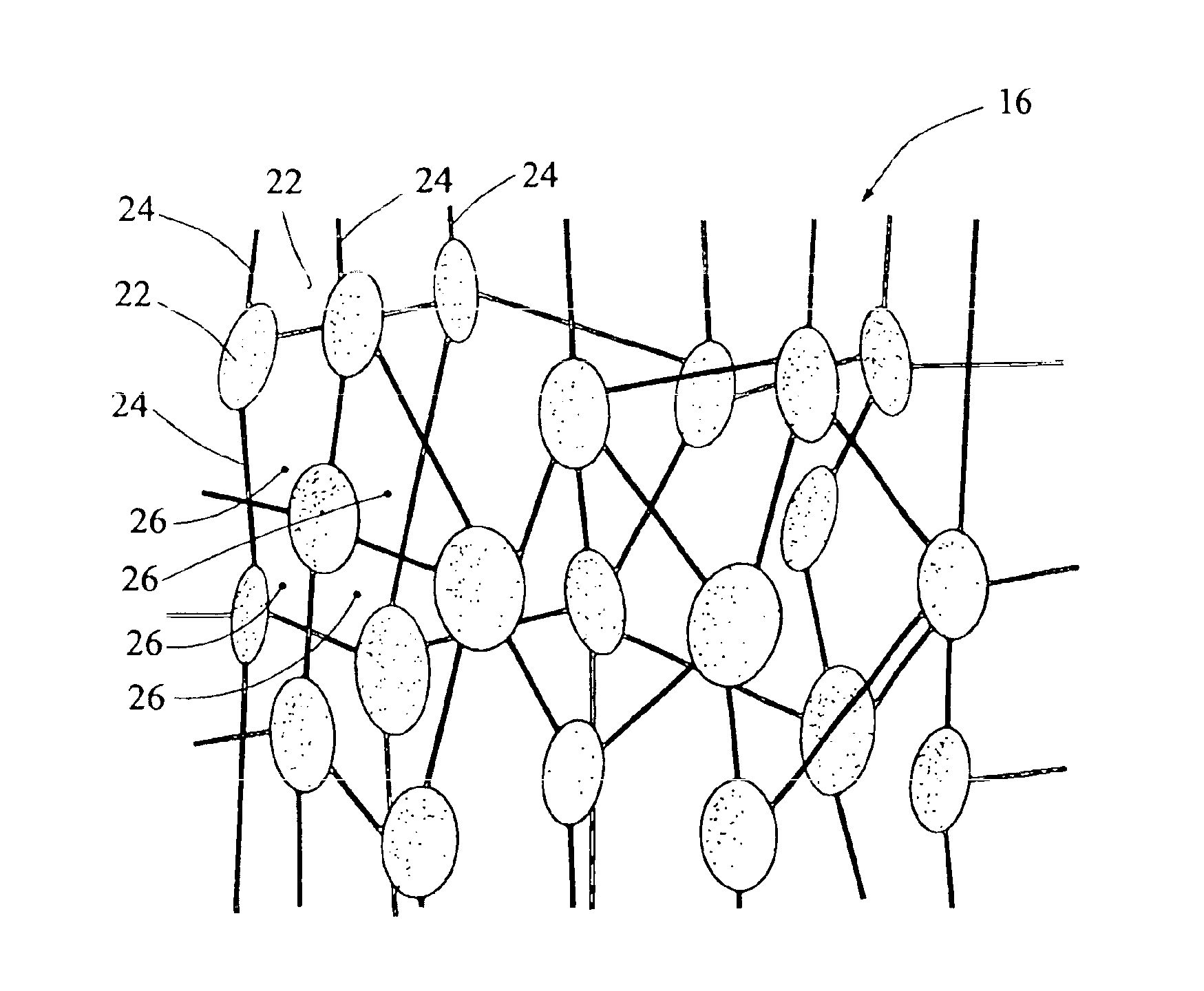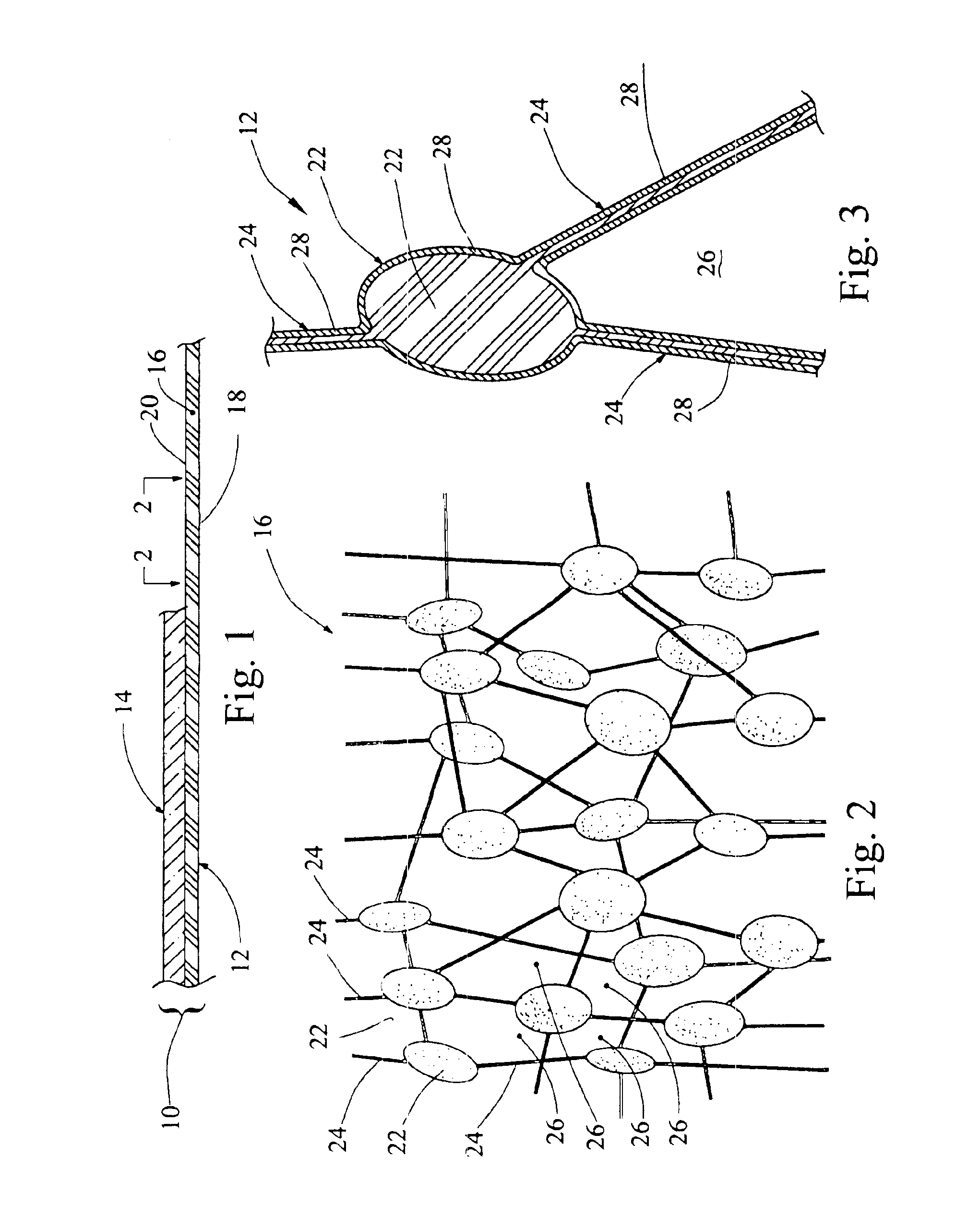Porous membrane structure and method
a porous membrane and membrane technology, applied in the field of porous membranes, can solve the problems of requiring relatively expensive equipment and materials, unable to effectively resist liquid penetration of membranes, and unable to freely permeate through polyurethane layers,
- Summary
- Abstract
- Description
- Claims
- Application Information
AI Technical Summary
Benefits of technology
Problems solved by technology
Method used
Image
Examples
example 1
MEMBRANE EXAMPLE 1
A microporous membrane 16 (manufactured by BHA Technologies, Inc. and designated QM011) made from ePTFE material was used. The membrane 16 preferably has an average pore size in the range of about 0.35 to 1.0 micron. The membrane 16 is preferably about 0.0015 inch thick. The membrane 16 is preferably at least partially sintered.
treatment example 1
The membrane 16 described above was treated with a diluted and stabilized Zonyl® 7040 dispersion. The following diluted and stabilized dispersion was used for treatment:
treatment componentpercent by weightoleophobic fluoropolymer dispersion (Zonyl ® 7040)13.9stabilizing agent (water)21.5wetting or diluting agent (IPA)64.6
The samples were heated to between 220° C. and 240° C. for thirty seconds to coalesce the solids onto the nodes and fibrils of the treated membranes. Over three hundred treated membranes were tested. Most of the pores in the treated membranes were not “blinded” or closed off. All the treated membranes displayed air permeabilities of more than 0.1 CFM / ft2 and most were in the range of 0.2 and 1.3 CFM / ft2. All the treated membranes displayed an MVTR of more than 69,000 gr / m2 / day and most were in the range of 70,000 and 102,000 gr / m2 / day. The treated membranes would hold out at least an 80% IPA challenge.
It is important to remember that comfort of the user of the compo...
PUM
| Property | Measurement | Unit |
|---|---|---|
| temperature | aaaaa | aaaaa |
| contact angle | aaaaa | aaaaa |
| contact angle | aaaaa | aaaaa |
Abstract
Description
Claims
Application Information
 Login to View More
Login to View More - R&D
- Intellectual Property
- Life Sciences
- Materials
- Tech Scout
- Unparalleled Data Quality
- Higher Quality Content
- 60% Fewer Hallucinations
Browse by: Latest US Patents, China's latest patents, Technical Efficacy Thesaurus, Application Domain, Technology Topic, Popular Technical Reports.
© 2025 PatSnap. All rights reserved.Legal|Privacy policy|Modern Slavery Act Transparency Statement|Sitemap|About US| Contact US: help@patsnap.com



